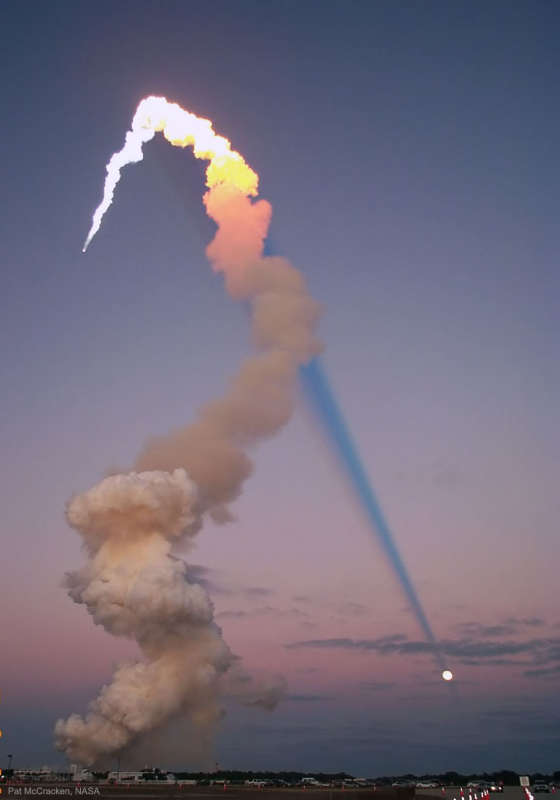
|
Credit & Copyright: Pat McCracken,
NASA
Explanation:
Why would the shadow of a
rocket's launch plume point toward the Moon?
In early 2001 during a launch of the
space shuttle
Atlantis,
the Sun,
Earth,
Moon,
and rocket were all properly aligned for
this photogenic coincidence.
First, for the
space shuttle's plume to cast a long shadow,
the time of day must be either near
sunrise or
sunset.
Only then will the
shadow
be its longest and extend all the way to the
horizon.
Finally, during a
Full Moon, the
Sun and
Moon are on
opposite sides of the sky.
Just after
sunset, for example,
the Sun is slightly below the
horizon, and,
in the other direction, the Moon is slightly above the horizon.
Therefore, as
Atlantis blasted off, just after
sunset,
its shadow projected away from the Sun toward the
opposite horizon, where the
Full Moon happened to be.
Almost Hyperspace:
Random APOD Generator
|
January February March April May June July August September October November December |
| ||||||||||||||||||||||||||||||||||||||||||||||||
NASA Web Site Statements, Warnings, and Disclaimers
NASA Official: Jay Norris. Specific rights apply.
A service of: LHEA at NASA / GSFC
& Michigan Tech. U.
Based on Astronomy Picture
Of the Day
Publications with keywords: space shuttle - Moon - shadow
Publications with words: space shuttle - Moon - shadow
See also:
